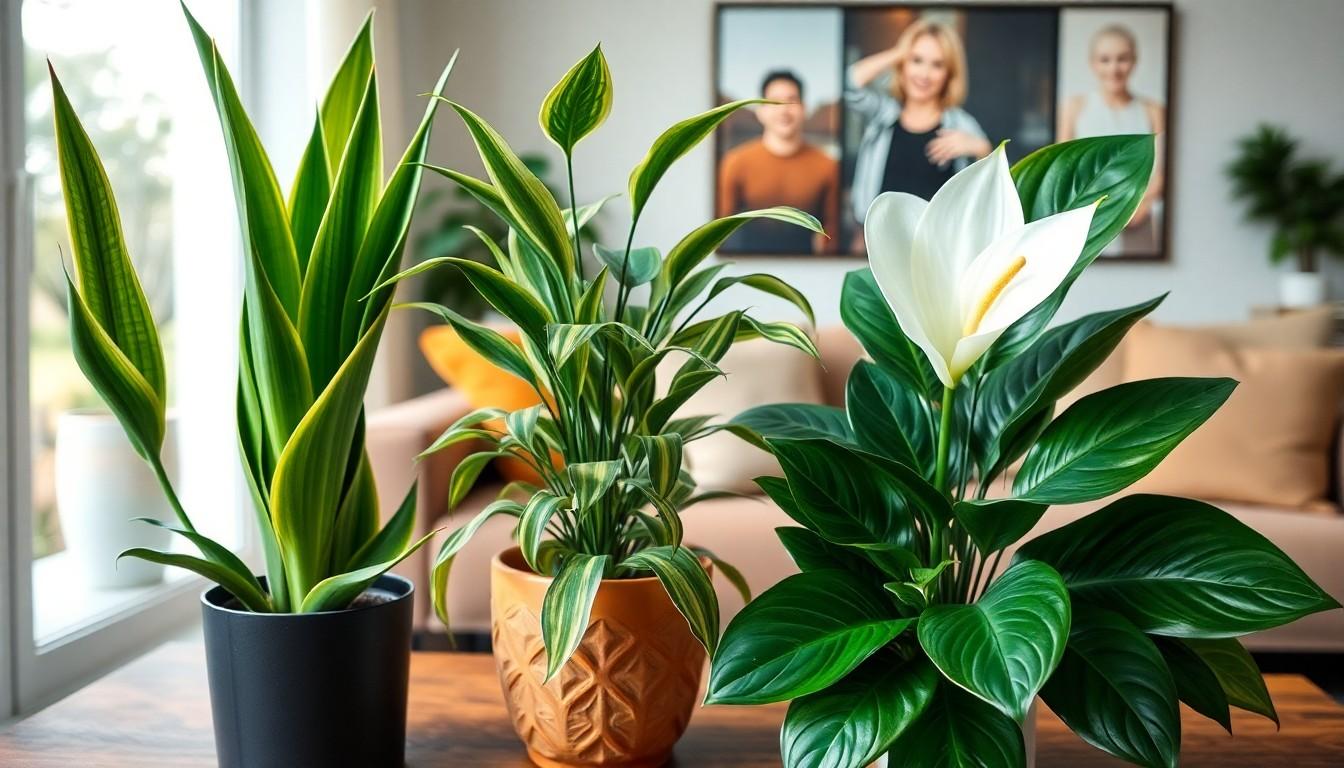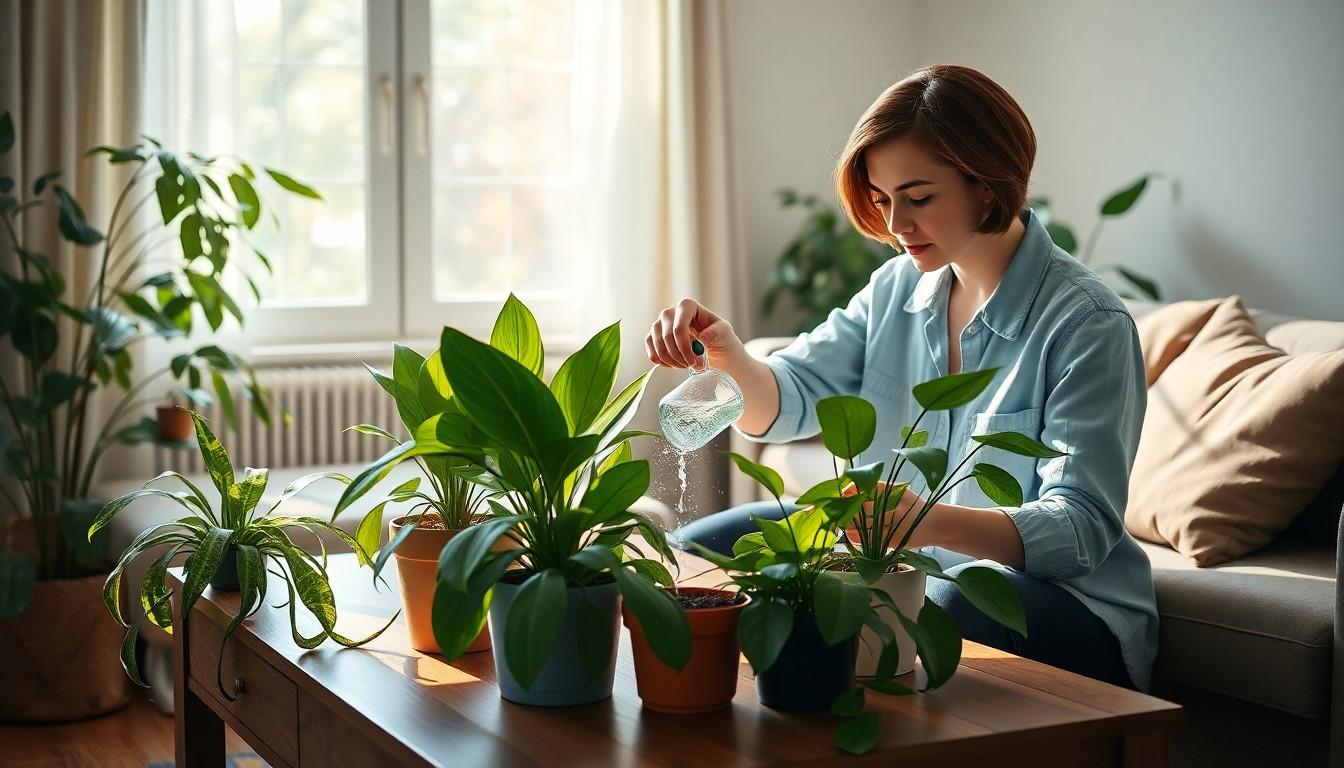Breathing easy in a stuffy room? Not so much. But what if the solution is as simple as adding a few leafy friends to your space? Indoor plants not only brighten up dreary corners but also work tirelessly to pump fresh oxygen into the air. They’re like little green air purifiers, minus the hefty price tag and the annoying whirring noise.
Benefits Of Indoor Plants For Oxygen
Indoor plants significantly improve air quality and promote psychological well-being. Their presence creates a healthier living space.
Enhancing Air Quality
Indoor plants actively produce oxygen through photosynthesis. This process effectively removes carbon dioxide, promoting cleaner air. Studies show plants like the Snake Plant and Peace Lily excel in oxygen production. By integrating these plants indoors, individuals experience reduced airborne toxins, leading to a fresher atmosphere. Properly placed foliage can increase humidity levels, further benefiting respiratory health. Health organizations recognize indoor plants’ potential roles in improving overall air quality.
Psychological Benefits
Indoor plants contribute to mental well-being by reducing stress and improving mood. Studies indicate that the presence of greenery enhances feelings of relaxation. Interaction with plants can foster a sense of calm, which promotes focus and productivity. Colors and textures from various plants stimulate visual engagement, making environments more appealing. Employees in greenery-filled offices report higher satisfaction and lower fatigue. Overall, indoor plants support better emotional health and create inviting spaces.
Popular Indoor Plants Known For Oxygen Production

Indoor plants offer various options for enhancing oxygen levels in living spaces. Several species stand out for their effectiveness in this area.
Snake Plant
Snake Plant, or Sansevieria, thrives in low-light conditions and requires minimal maintenance. It efficiently converts carbon dioxide into oxygen, especially at night, making it a unique choice. This plant tolerates drought, allowing flexibility in care. Because of its tough leaves, Snake Plant also adds an architectural element to home decor. Research shows that it can improve indoor air quality by filtering out toxins like formaldehyde and benzene.
Spider Plant
Spider Plant, known scientifically as Chlorophytum comosum, excels at producing oxygen. It’s a fast-growing plant that can flourish in a variety of conditions. This species is particularly effective at cleansing the air of harmful pollutants. Additionally, Spider Plant produces “baby” shoots that can easily root in soil, making propagation simple. Its adaptability and resilience contribute to making it a popular choice for both novice and experienced plant owners.
Peace Lily
Peace Lily, or Spathiphyllum, not only beautifies spaces but also plays a crucial role in oxygen production. This plant thrives in shaded areas, making it suitable for indoor environments. With its ability to filter indoor air pollutants such as ammonia, benzene, and formaldehyde, Peace Lily significantly enhances air quality. Regular watering keeps it looking vibrant, while its stunning white flowers offer a touch of elegance. This plant’s combination of beauty and functionality makes it a favorite for improving indoor air conditions.
Caring For Indoor Plants
Caring for indoor plants ensures they thrive and effectively produce oxygen. Proper maintenance includes choosing appropriate pots and watering them correctly.
Choosing The Right Pots
Selecting the correct pots promotes healthy growth. Drainage holes must exist to prevent excess water buildup. Material matters; terracotta pots allow for adequate airflow, while ceramic pots offer aesthetic appeal. Size impacts root development; a pot too small restricts growth, while a pot too large retains excess moisture. Matching the plant’s needs with pot characteristics creates a favorable environment for oxygen production.
Watering Tips
Watering indoor plants requires attention to detail. Soil moisture should dictate the frequency of watering; it’s essential to check the top inch for dryness. Overwatering leads to root rot, while underwatering causes stress. Most plants benefit from deep, infrequent watering to encourage strong root systems. Timing is crucial; early morning or late afternoon watering avoids evaporation. Adjusting the frequency as seasons change aligns with the plant’s needs, promoting better health.
How Indoor Plants Improve Well-Being
Indoor plants enhance well-being through various mechanisms, actively contributing to a healthier lifestyle.
Stress Reduction
Indoor plants significantly reduce stress levels. Research indicates that simply being around greenery lowers cortisol levels, promoting relaxation. Engaging with plants, whether through watering or rearranging them, provides a therapeutic experience that fosters mindfulness. Additionally, natural elements like plants improve the aesthetic of surroundings, creating a calming atmosphere. Incorporating indoor plants into living spaces ensures individuals experience fewer feelings of anxiety and tension, promoting a serene environment.
Boosting Productivity
The presence of indoor plants increases productivity in work and study areas. Studies show that employees near plants demonstrate improved focus and better task performance. Greenery also enhances creativity, making environments more stimulating. Notably, plants help improve air quality, which directly influences cognitive function. Implementing a few well-placed indoor plants can lead to noticeable improvements in motivation and efficiency. Thus, they serve as valuable additions to home offices and study rooms, fostering an atmosphere conducive to high performance.
Conclusion
Indoor plants serve as essential allies in creating healthier living spaces. Their ability to produce oxygen and purify the air enhances overall well-being and fosters a calming atmosphere. By incorporating plants like the Snake Plant and Peace Lily into homes or workplaces, individuals can enjoy the dual benefits of improved air quality and increased productivity.
Caring for these green companions is crucial to ensure they thrive and continue their vital roles. With the right selection and maintenance, indoor plants can transform any environment into a sanctuary of freshness and tranquility. Embracing greenery not only beautifies a space but also promotes a healthier lifestyle.

